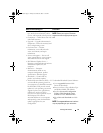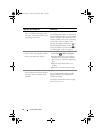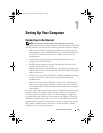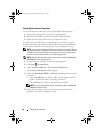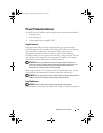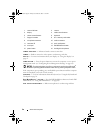
Setting Up Your Computer 19
Setting Up Your Computer
Connecting to the Internet
NOTE: Internet Service Providers (ISPs) and ISP offerings vary by country.
To connect to the Internet, you need a modem or network connection and an ISP.
Your ISP will offer one or more of the following Internet connection options:
• DSL connections that provide high-speed Internet access through your
existing telephone line or cellular telephone service. With a DSL connection,
you can access the Internet and use your telephone on the same line
simultaneously.
• Cable modem connections that provide high-speed Internet access
through your local cable TV line.
• Satellite modem connections that provide high-speed Internet access
through a satellite television system.
• Dial-up connections that provide Internet access through a telephone line.
Dial-up connections are considerably slower than DSL, cable, and satellite
modem connections.
• Wireless Wide Area Network (WWAN) or Mobile Broadband technology
provides a connection to the Internet using cellular technology at
broadband rates.
• Wireless Local Area Network (WLAN) connections use high-frequency
radio waves to communicate. Typically, a wireless router is connected to
the broadband cable or DSL modem that broadcasts the Internet signal to
your computer.
If you are using a dial-up connection, connect a telephone line to the modem
connector and to the telephone wall jack before you set up your Internet
connection. Your system does not have an internal modem. It supports an
external USB modem which can be connected to the USB port. If you have
ordered an external modem with your system, see the Help in the CD that
shipped with the modem for information on setting it up. If you are using a
DSL, cable or satellite modem connection, contact your ISP or cellular
telephone service for setup instructions.
book.book Page 19 Friday, November 30, 2007 11:28 AM







